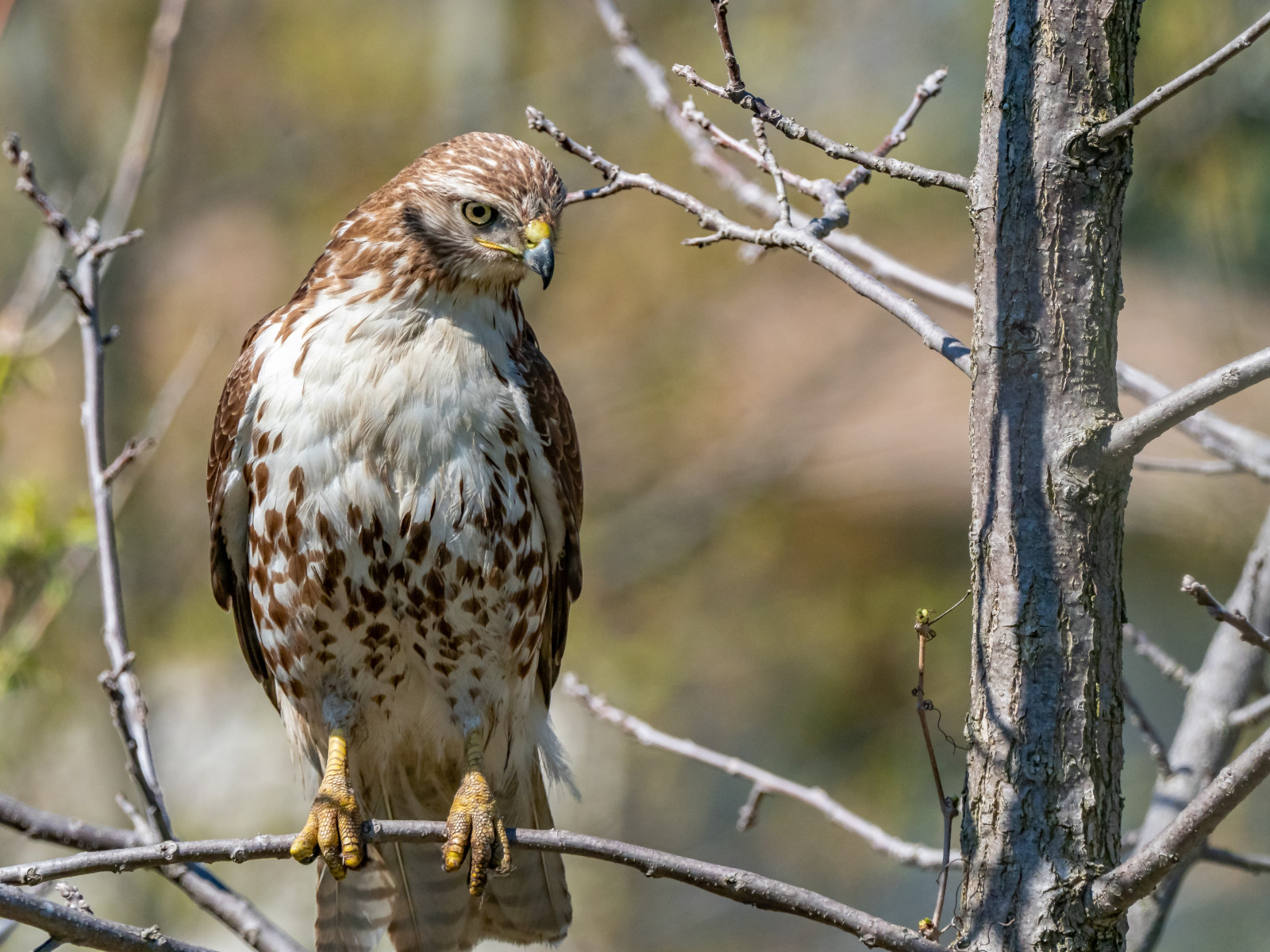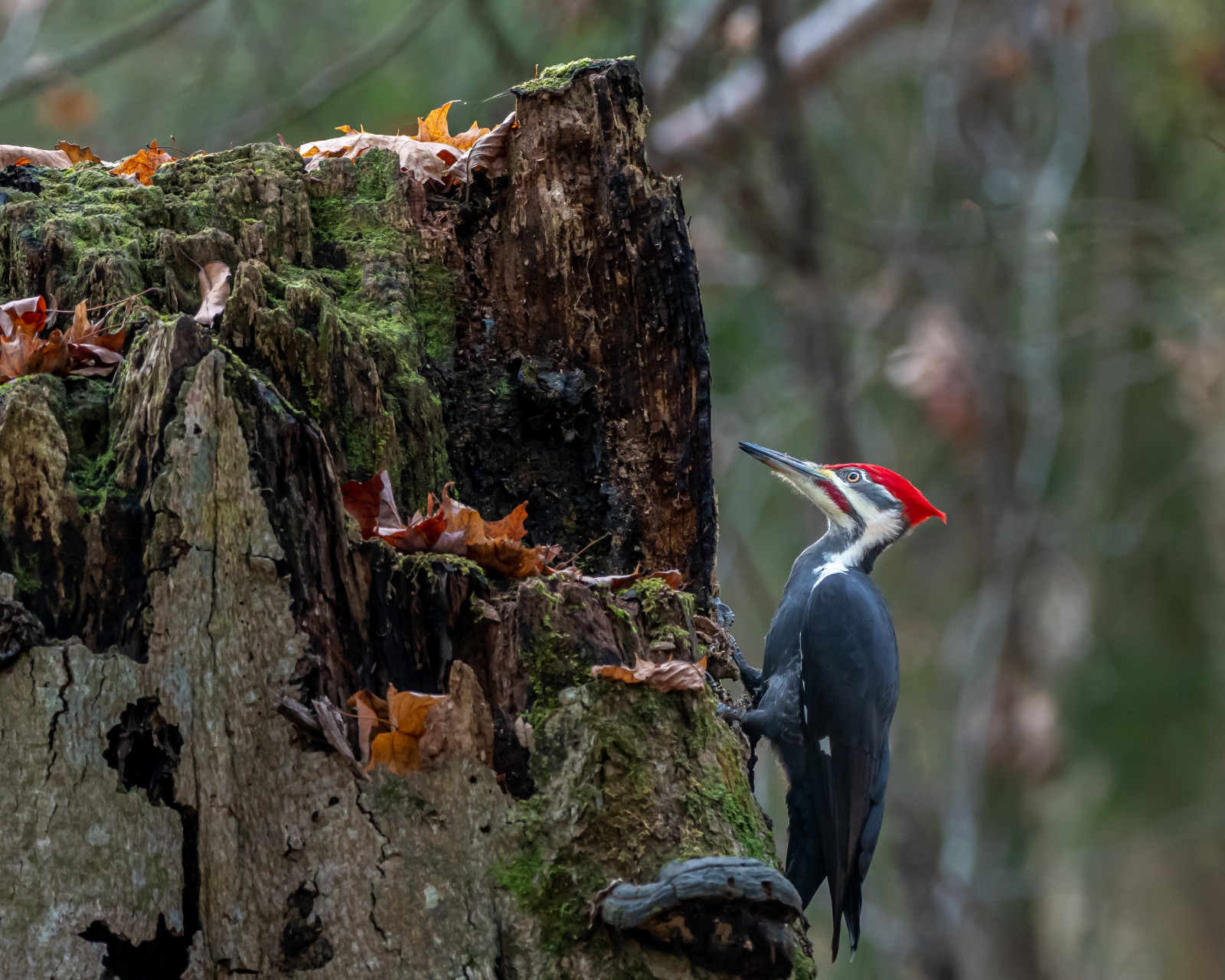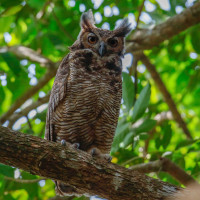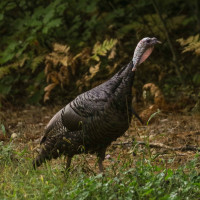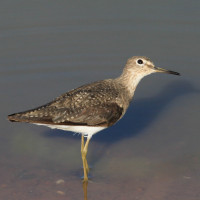Description
In the Winter, the forest at Technoparc de Montréal attracts a good number of resident birds like Northern Cardinal, Wild Turkey, Pileated Woodpecker or Mourning Dove. The main attraction of winter birding at the Technoparc comes with its abundance of prey, which attracts the highest raptor diversity of the island. In the winter, Red-tailed Hawk, Cooper’s Hawk and American Kestrel are often seen. On a good year, Rough-legged Hawk and Northern Shrike will also spend the winter hunting in the open areas of the site.
Without any doubt, though, the most famous of the winter residents are the nocturnal raptors. Depending on the year, the forest, the golf course and the airport’s grounds have hosted Great Horned Owl, Long-eared Owl, Short-eared Owl, Barred Owl, Northern Saw-whet Owl and Snowy Owl, with at least one species always present, and sometimes up to 4 or 5 at the same time!
When Spring comes, the Technoparc gets really alive, with suitable habitat for just about every migrant except for large bodies of water. The airport’s prairie is one of the best places on the island to spot Eastern Meadowlark, Killdeer or Northern Harrier passing through early in the Spring. The marsh and the forest can become teeming with Sparrows, Thrushes and Warblers. At the beginning of April, the Technoparc might be the best spot in the province to see the display of the American Woodcock at dusk.
As Spring advances, most breeding birds of the site will start arriving and settle for the summer. The Technoparc has an excellent heron variety, and you can hope to see Great Blue Heron, Great Egret, Black-crowned Night-Heron, Green heron and Least Bittern on the same day. It’s the best breeding site for Green-winged Teal on the island and Wood Duck is also common there. Many other marsh specialists can be spotted at the Technoparc, including Wilson’s Snipe, Common Gallinule, Belted Kingfisher and Eastern Kingbird. Many raptors have been known to breed on the site or very close by, including Red-tailed Hawk, Red-shouldered Hawk, Cooper’s Hawk, American Kestrel and Merlin. A Common Raven family is seen throughout the year at the Technoparc.
Depending on water levels, small groups of shorebirds can arrive at the beginning of August and use mudflats around the IPEX marsh. Solitary and Spotted Sandpiper are quite common in the early Fall in the big marsh, where they walk on the trunks of fallen trees. In addition to the more common ducks, Hooded Merganser will often stop on the big marsh while migrating. Late fall birding is also quite interesting, as big number of Red-winged Blackbirds will use the des Sources marsh to roost at night. Look for possible Rusty blackbirds among the groups of Red-winged blackbirds and Common Grackles.
------
Français:
En hiver, la forêt du Technoparc de Montréal attire un bon nombre d'oiseaux résidents à l'année, comme le Cardinal rouge, le Dindon sauvage, le Grand Pic ou la Tourterelle triste. L'intérêt principal de l'observation hivernale vient avec l'abondance de proies disponibles, qui attire la plus grande diversité de rapaces de l'île. En hiver, on peut fréquemment y observer l'Épervier de Cooper, la Buse à queue rousse ou la Crécerelle d'Amérique. Les bonnes années, la Buse pattue et la Pie-grièche boréale peuvent aussi y passer l'hiver et chasser dans les milieux ouverts du site.
Toutefois, ce sont les rapaces nocturnes qui sont sans aucun doute les résidents hivernaux les plus célèbres du Technoparc. À un moment ou l'autre dans les dernières années, la forêt, le terrain de golf et les terrains de l'aéroport ont accueilli le Grand-duc d'Amérique, le Hibou moyen-duc, le Hibou des marais, la Chouette rayée, la Petite Nyctale et le Harfang des neiges. Il y a presque toujours une espèce de Strigidé à observer au Technoparc, et parfois jusqu'à 4 ou 5 espèces en même temps!
Au printemps, le Technoparc sort de sa torpeur, et presque tous les habitats sont disponibles pour les oiseaux migrateurs à l'exception de vastes étendues d'eau. La prairie de l'aéroport est un des meilleurs endroits de l'île pour espérer voir la Sturnelle des prés, le Pluvier kildir ou le Busard des marais qui y passent tôt au printemps. Le marais et la forêt peuvent vraiment foisonner de bruants, de grives et de parulines. Au début du mois d'avril, le Technoparc est peut-être le meilleur endroit de toute la province pour observer la pariade de la Bécasse d'Amérique au crépuscule.
Alors que le printemps laisse place à l'été, la plupart des oiseaux nicheurs du site vont s'installer pour y passer l'été. Le Technoparc a une grande variété d'espèces de hérons, et vous pouvez espérer y apercevoir le Grand Héron, la Grande Aigrette, le Bihoreau gris, le Héron vert et le Petit Blongios dans la même journée. Il s'agit du meilleur site de nidification de l'île de la Sarcelle d'hiver, et le Canard branchu y est aussi commun. Plusieurs autres spécialistes de milieux humides peuvent aussi y être observés, comme la Bécassine de Wilson, la Gallinule d'Amérique, le Martin-pêcheur d'Amérique et le Tyran tritri. Plusieurs rapaces ont déjà niché sur le territoire du Technoparc ou non loin, comme la Buse à queue rousse, la Buse à épaulettes, l'Épervier de Cooper, la Crécerelle d'Amérique et le Faucon émerillon. Une famille de Grands Corbeaux fréquente le site à l'année.
En fonction du niveau de l'eau, de petits groupes de limicoles peuvent arriver dès le début du mois d'août et utiliser les marais asséchés autour du marais IPEX. Le Chevalier grivelé et le Chevalier solitaire sont assez communs au début de l'automne dans le marais principal, où ils se nourrissent le long des troncs d'arbre tombés. En plus des canards plus communs, le Harle couronné s'y arrête souvent en migration. La fin de l'automne apporte aussi son lot de surprises au Technoparc, alors que de grands groupes de Carouges à épaulettes utilisent le marais des Sources comme dortoir. Observez bien ces groupes à la recherche d'un Quiscale rouilleux parmi les Carouges à épaulettes et les Quiscales bronzés.
Details
Access
The two best starting points are either on the corner of Marie-Curie and Alfred-Nobel, or at the very end of Chemin Saint-François, which provides ample parking. Click on a P in the map for directions or coordinates. There are very good possibilities to bird on paved and accessible roads inside the area, but some of the best birding has to be done through trails that are definitely not accessible. Conditions can be pretty hard, either with a lot of snow on the trails in winter, or very flooded trails in the Spring, in which case rubber boots are sometimes absolutely necessary.
The park is not an official park, and signage is not always easy to find. It is strongly suggested to check for information on the Facebook group (see the link below) before going, as knowing where to go exactly can be very confusing over there. In June and July, parts of the forest get very heavy on mosquitoes, but there are always large sections where it's quite manageable. There are no toilets on site.

